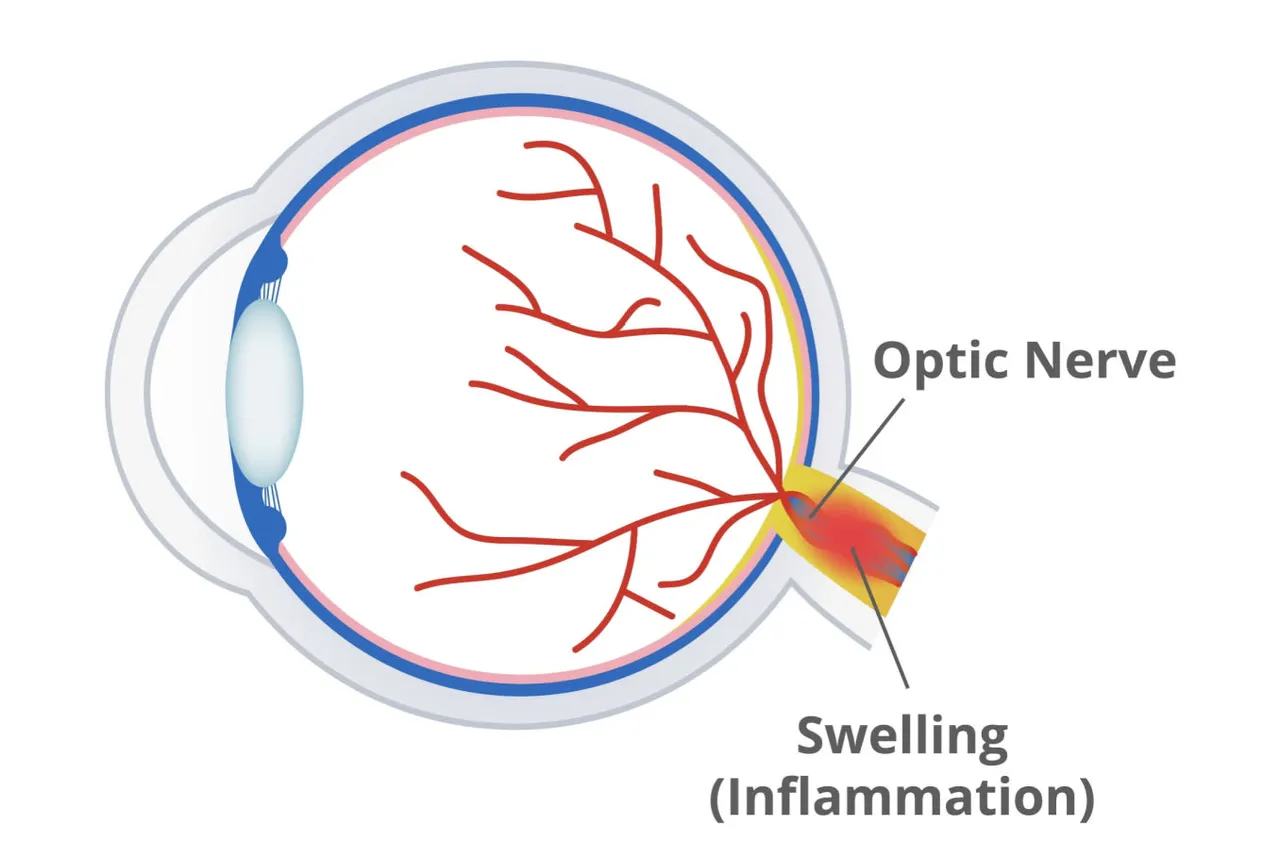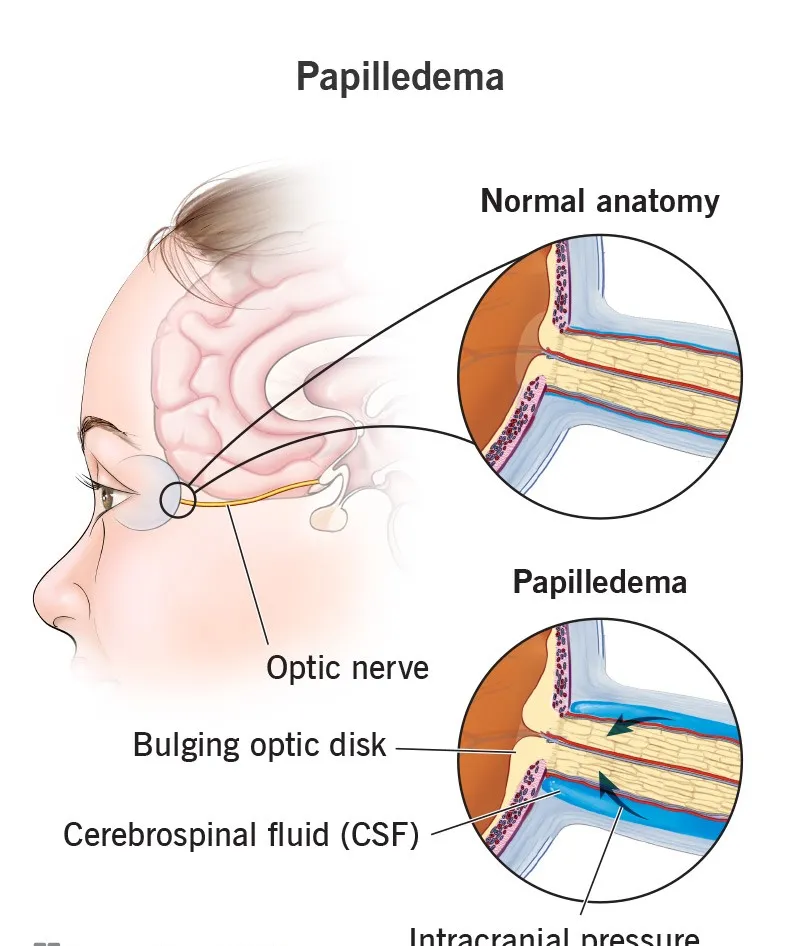The eye is a beautiful instrument of the body that brings light to the soul and our lives as a whole. Without sight, life would be a whole level of darkness and because of this the majority of us are particular about our eyes and their health however there will always be those who would wait until the last minute to see to their health.

This is why I have taken it upon myself as an Optometrist and a health advocate to always find something about the eye to discuss with us on a regular just so we could have our attention on our ocular health always and seek care where needed to be able to avoid the possibility of visual loss in instances that it could have been prevented.
Papilledema
Today we would be looking at a sight-threatening condition of the eye called papilledema. This is a condition of the eye that can develop so suddenly and can result in vision loss and could also take time to come up. The prognosis tends to be bad in many cases however there are also times when it is caught in time and vision is spared especially when the cause is discovered early enough.
So what happens is that within your eye there is a part called the Optic disc, this is an area where the various cells that are involved in the phototransduction process (transforming light to electrical impulses for interpretation by the brain) meet up and form the beginning of the optic nerve, the second cranial nerve that is responsible for sight or vision. In Papilledema this area gets swollen.

When the area gets swollen there pressure developed which tends to kill some of these important cells and the nerves, thus the more it persists the chances of visual loss progress until a point where atrophy occurs, and a good portion of vision may have been lost. The condition is associated with a rise in pressure in the head or brain, medically referred to as intracranial pressure. It may also come about due to inflammations, infections, and chronic hypertension which may have been left untreated.
A lot of times when this occurs it is with both eyes although in some occasions it tends to be just one eye, if the cause tends to be as a result of inflammation then steroids would go a long way to aiding the patient and helping in the recovery process, similarly in the case of infection then antimicrobials would do the patient a lot of good however a case of increased intracranial pressure perhaps due to hemorrhage may warrant a decompression by a neurologist or neurosurgeon.
The condition can cause you to have severe headaches, even dizziness, and nausea, and could result in intermittent loss of vision (medically referred to as fax amaurosis). You should have your eyes checked if you are experiencing any of these or you may have had severe headaches for a while that doesn't seem to go away. Take note that papilledema is considered a medical emergency and thus you shouldn't take these symptoms lightly.
Conclusion
Never take for granted and symptoms you may experience with your eyes or your vision because whiles it may be nothing to worry about sometimes it could be sight-threatening and only your eye care provider would be in the best situation to tell the difference between these two instances. Once again I do hope that my dear readers learned a thing or two from what I had to share today.

It is always a pleasure, as I wrap up let me once again remind us all to avoid the use of over-the-counter medication without proper examination from professionals, also when in doubt please speak to a professional and remember to have frequent care or checkups. Be safe and have a blissful week.
Further Reading
Doshi , R., & Noohani, T. (2023). Subconjunctival Hemorrhage. In StatPearls. StatPearls Publishing..
Parikh, A. O., Christian, C. W., Forbes, B. J., & Binenbaum, G. (2022). Prevalence and Causes of Subconjunctival Hemorrhage in Children. Pediatric emergency care, 38(8), e1428–e1432. https://doi.org/10.1097/PEC.0000000000002795.
Knopf, H. L., Carter, K., & Prokopius, M. J. (2006). Recurrent subconjunctival hemorrhage. Comprehensive ophthalmology update, 7(3), 155–156.
Mimura, T., Yamagami, S., Mori, M., Funatsu, H., Usui, T., Noma, H., & Amano, S. (2010). Contact lens-induced subconjunctival hemorrhage. American journal of ophthalmology, 150(5), 656–665.e1. https://doi.org/10.1016/j.ajo.2010.05.028.